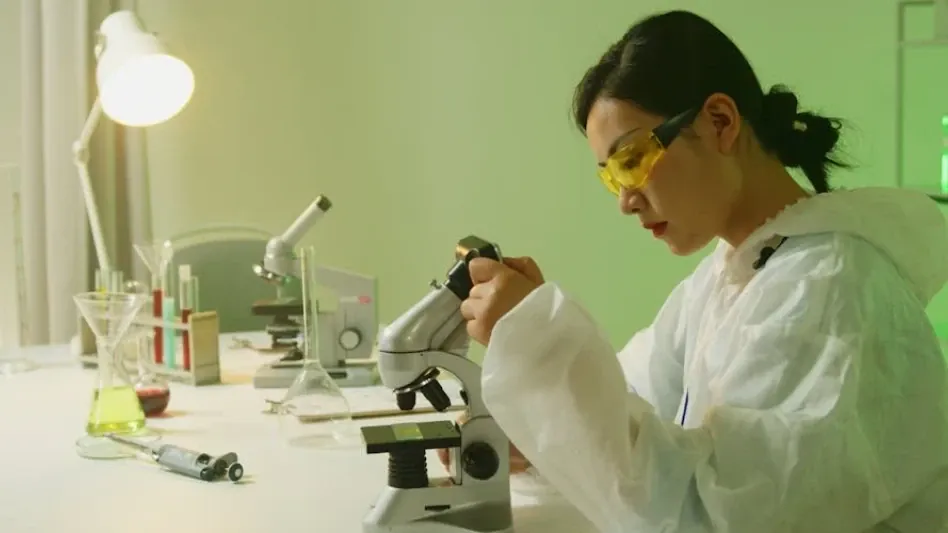The scientific workflow behind drug discovery is a complex and iterative process that ensures accuracy, reproducibility, and scientific integrity. This workflow follows a structured approach, starting from the formulation of a scientific question to the generation of a comprehensive report based on the analyzed data. Understanding this workflow is essential for anyone involved in biological research or pharmaceutical development, as it highlights the importance of each phase in ensuring the reliability of the results. This article provides a detailed look into the various stages of the drug discovery process, emphasizing the critical steps involved in hypothesis generation, dataset collection, data analysis, and result interpretation.
1. Formulate Scientific Question
At the heart of any scientific research lies a well-defined scientific question. This question forms the foundation for the entire investigation, guiding the direction of the study and focusing the analysis on specific hypotheses. It is essential to articulate this question clearly and concisely, as it helps in setting the objectives and scope of the research. A well-formulated scientific question not only drives the research but also provides a framework for evaluating the results.
In drug discovery, the scientific question often revolves around understanding the mechanisms behind a particular disease or identifying potential therapeutic targets. For example, a research question could be: “What are the key genetic factors contributing to the development of diabetes?” Such a question helps narrow down the focus to specific genetic elements that can be investigated further. Formulating a precise scientific question is crucial as it determines the success of the entire research endeavor.
2. Develop Hypotheses
Once the scientific question has been formulated, the next step is to develop hypotheses based on prior research and available datasets. A hypothesis is a testable prediction that provides a possible answer to the scientific question. It is essential to base these hypotheses on solid empirical evidence and theoretical foundations. Researchers often review existing literature and gather preliminary data to support their hypotheses.
Hypothesis development is a critical phase as it sets the stage for experimental design and data collection. Multiple hypotheses can be generated to explore different aspects of the scientific question. For instance, in the context of diabetes research, a hypothesis could be: “Mutations in the gene ABC1 are associated with increased insulin resistance.” The hypotheses should be specific and measurable, allowing researchers to test them rigorously through experimental methods.
3. Collect Datasets
After developing hypotheses, the next step is to collect datasets that will be used for analysis. These datasets can be either public or proprietary. Public datasets are often larger but may require careful scrutiny to identify noise or inconsistencies. Researchers must ensure the datasets they use are reliable and relevant to their research question. Public datasets can be obtained from various sources, including online repositories and published studies.
Proprietary datasets, on the other hand, are generated under controlled conditions within a laboratory. These datasets often come from in-house assays or experiments and may not require as much validation as public data. However, researchers must still have a solid understanding of the experimental design and data generation methods used to produce these datasets. In drug discovery, datasets may include genomic data, protein expression data, or clinical trial results.
4. Understand Data
Understanding the data is crucial before any analysis can begin. This step involves verifying the experimental design and understanding how the data was generated. For example, researchers need to know whether the data was obtained through RNA sequencing, mass spectrometry, or other biological assays. Public datasets often come with linked papers or supplementary documents that provide essential context about the experimental setup.
Understanding the experimental context is vital for accurate interpretation of the data. These linked materials may describe the cell lines used, the specific conditions under which experiments were performed, and any potential limitations of the data. Without this information, researchers may misinterpret the dataset, leading to inaccurate conclusions. Therefore, a thorough understanding of the data generation process is necessary to ensure the reliability of the results.
5. Perform Integrity Check
The next critical step in the workflow is performing an integrity check, commonly referred to as a “sanity check.” This process involves assessing the dataset for biological inconsistencies or errors. For example, researchers may check for the presence of genes that should not be expressed in certain tissues. Such inconsistencies could indicate potential issues with the data that need to be addressed before proceeding with analysis.
Integrity checks also involve the inclusion of negative controls. Researchers deliberately include genes or proteins that are not expected to be relevant to the condition being studied. This acts as a safeguard against false positives and misinterpretation of the data. By comparing the dataset to known biological patterns, researchers can detect potential anomalies and address them before moving to the next step. Sanity checks are essential for maintaining the integrity of the dataset and ensuring the reliability of the subsequent analysis.
6. Clean Data
Data cleaning is a crucial phase in the scientific workflow. This step involves handling missing data points, outliers, and other anomalies that may affect the analysis. In vivo datasets, which involve experiments conducted on living organisms, often exhibit natural biological variation. For instance, there may be outliers in control groups due to this variation. In such cases, removing outliers might distort the biological reality, so they are often retained in smaller datasets to preserve the integrity of the biological variability.
In larger datasets, such as those generated through RNA sequencing or mass spectrometry, true outliers can often be identified and removed without negatively impacting the analysis. During this phase, it is crucial to strike a balance between removing erroneous data and preserving meaningful biological variability. In cases where control or treatment groups show large variability, this could reflect true biological responses to a treatment, and removing such data could reduce the accuracy of the analysis. Therefore, data cleaning requires careful consideration to ensure the reliability and validity of the results.
7. Conduct Descriptive Analytics
Once the data has been cleaned, it is subjected to descriptive analytics. This stage involves generating statistical summaries that reveal patterns, trends, or anomalies in the data. Descriptive analytics helps researchers to interpret the data and gain insights into the biological mechanisms under investigation. Techniques such as statistical tests, plots, and data visualization are commonly used to explore the data.
Through descriptive analytics, researchers can confirm whether the data aligns with the original hypothesis or if new patterns have emerged that warrant further investigation. This phase often provides a preliminary understanding of the dataset, allowing researchers to refine their hypotheses and experimental design. Descriptive analytics serves as a bridge between raw data and more sophisticated inferential analyses, helping researchers to make informed decisions about the next steps in their investigation.
8. Generate Report
The final phase of the scientific workflow involves generating a comprehensive report based on the analyzed data. This report summarizes the findings and provides detailed documentation of the methods and results. A well-structured report ensures transparency and allows other researchers to replicate the study, enhancing the overall scientific integrity of the research.
Each stage of this workflow is crucial to producing reliable results, making it essential for those in biological research or pharmaceutical development to understand it fully. The stages include hypothesis generation, dataset collection, data analysis, and result interpretation, all of which are critical steps that provide a foundation for the study’s reliability. This article delves deeply into each phase of the drug discovery process, detailing how each step functions and its importance in achieving accurate and consistent scientific findings. It underscores the necessity of a transparent and methodical approach to ensure that results are not only significant but also reproducible, ultimately contributing to scientific progress and innovation in drug discovery.









